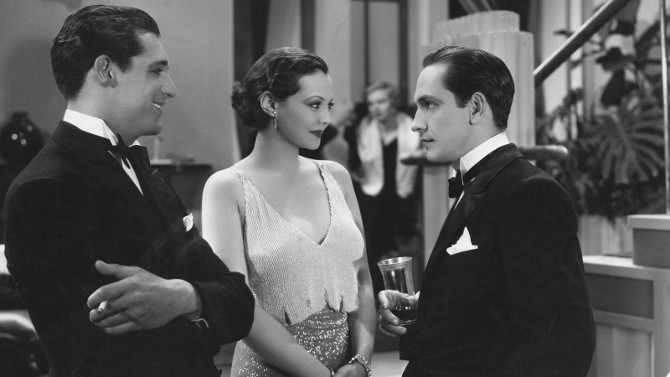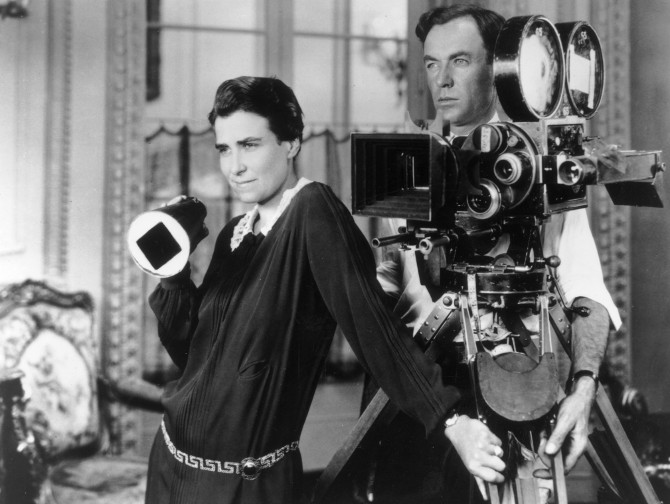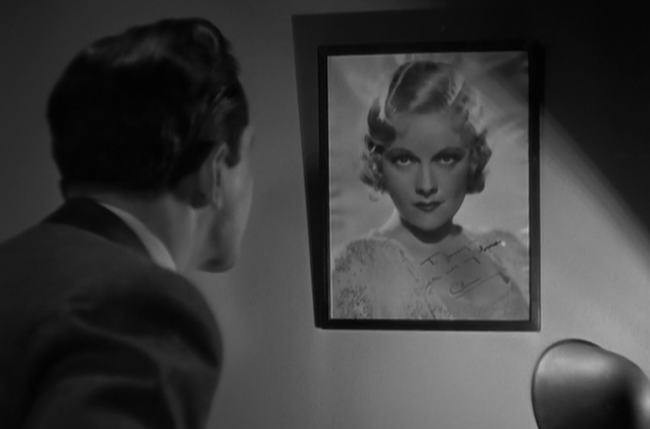In this era of female empowerment, a name from the past that must be highlighted is Dorothy Arzner. Starting as a typist in the film business for director William C. de Mille (the older brother of Cecil), less than a year later, she had worked her way up to screenwriter, soon after, promoted to editor. Editing star Rudolph Valentino’s Blood and Sand, her impressive skill was immediately evident. Continuing to do stellar work, she eventually threatened to move from Paramount to rival Columbia if not given a directorial job, the studio conceding in 1927.
The only major female director in Hollywood during its “Golden Age”, she was able to transition from silent films to talkies (the first female director to make one), and, while filming 1929’s The Wild Party, is credited with essentially developing the first boom mike – some say it was to help star Clara Bow get over her fear of talking on camera, others to end her frustration of always having to hide a microphone in one spot on set. . . in any case, she had technicians rig a microphone onto a fishing rod, solving the problem (and, though she did not patent the idea, Edmund H. Hansen did one year later, she is credited with its invention).
With a unique female spin, she directed twenty films throughout her career (and became the first female to join the newly formed Directors Guild of America in 1936), challenging patriarchal society and tackling sexual themes (she was a lesbian) – evident in both her work prior to the Production Code coming into play and after it. An example of her talent, 1932’s enthralling, exploitatively titled Merrily We Go to Hell.
Following Joan Prentice (Sylvia Sidney), the cherub-faced, kindly daughter of a multi-millionaire, she meets drunken newspaper writer Jerry Corbett (Fredric March) at a party late one night. Immediately smitten with the gent (she has long praised his unique wit on the written page), it is love at first sight. Soon, Jerry is pursuing Joan, much to the dismay of her sharp father (George Irving), who knows the type of guy she is dealing with.
Losing out to love, Mr. Prentice washes his hands of the situation, accepting their marriage, with the couple agreeing to make it on their own (without any of his money). Hopping on the wagon, Joan is a positive influence on her man, driving him forward as he follows his dream of creating a successful play.
Alcohol free for the first time in an age, he sells his stage play to a producer in New York, who asks the pair to move to The Big Apple – on location for re-writes and any other situations that may pop up. Yet, Jerry has a complicated past, and he soon learns that the star of the spectacle is his ex-fiancée, stunning blonde Claire Hempstead (Adrianne Allen).
A bad influence, soon Claire is convincing Jerry to hit the bottle again. He caves due, in part, to the stress of premiere night, it causing strife in his marriage. A prime example of the type of thing seen in stories prior to the Production Code (often referred to as the Hays Code), Joan soon becomes frustrated with her man, and in an alcoholic fit of her own, opens the door for him to cheat on her – the weak-willed Jerry leaving for a fling with his former gal.
Instead of leaving him, the confused young woman tells Jerry that if he is to have bonus privileges, so is she. . . what amounts to an open marriage. Things quickly sour between the two, a battle of the sexes. Jerry continues to drunkenly prance around with Claire (at one point even making out with her during a party in their own home), while Joan starts to hit the town with a multitude of men (including Cary Grant at his suave best; an early screen role for the future star – he would achieve top billing for the first time later in the year for Hot Sunday). What will come of the crumbling marriage? Will the pair be able to connect their diverging paths and reconcile?
With the title coming from a toast often uttered by Jerry, the phrase is a perfect description of their flailing marriage. Filling their nights with drunken escapades, sexual trysts and loud friends, the merry actions only cover up their descent into relationship hell. Played with gusto by March and Allen, it is Sidney who is the true standout – showing an impressive range of emotions. Edwin Justus Mayer, adapting Cleo Lucas’ novel “I, Jerry, Take Thee, Joan”, does a nice job adding a late dose of the male ego – a memorable sequence towards the end that finds Jerry meeting with Mr. Prentice.
Though the film feels a bit stiff in the beginning, it hits its stride after the couple marry, their relationship driving the story forward. Arzner draws us into their sordid marriage, providing the audience with a birdseye view of the tragic events. Intriguingly, there is also an early example of product placement – not shockingly, it is a bottle of Henessey’s three star whiskey. Along with cinematographer David Abel, it feels as though the shots get darker the deeper we get, the final sequence dosed with shadowy blacks and greys.
A solid example of a Pre-Code feature, Merrily We Go to Hell was not without its controversy – the Los Angeles Times would not print any ads due to its sordid title (though its reviews did include the saying). Featuring quality performances, an interesting tale and a noteworthy director, it is well worth toasting. So, don’t be a baby, you’ll love taking a swig of this edgy, Pre-Code motion picture – it’s swell.



